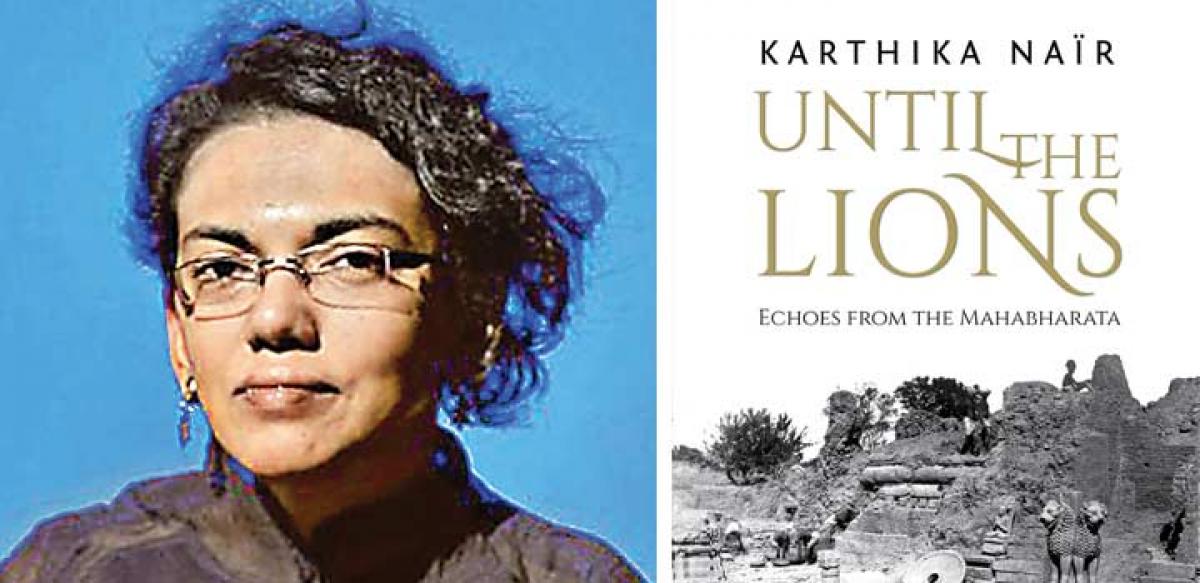Live
- Cancel panchayat elections in Punjab: Sukhbir Badal
- IIT Madras’ new quantitative research lab to boost AI research in financial markets
- ED raids Vatika Limited in Delhi and Gurugram in money laundering case
- International equestrian returns to India after 14 years with AEF Cup Youth in Bengaluru
- U&i Unveils Feature-Rich Neckband, TWS, Powerbank, and Speaker: Idle Gifting Options for the Festive Season
- Studies at the Local Level Essential for the Preservation of the Western Ghats --Dr. Ullas Karanth
- US presidential election: Trump and Harris aiming to leverage PM Modi's great connect with diaspora, believes former FS
- Indian MF industry's average asset under management up 2.97 pc in Sep
- 28 killed in Israeli airstrike on school in Gaza
- Sports Ministry invites comments on Draft National Sports Governance Bill 2024
Just In

Retelling The Epic.
Karthika Nair was born in India, lives in Paris, and works as a dance producer and curator. She is the author of Bearings, a poetry collection; DESH: Memories, inherited, borrowed, invented, a dance diary; and The Honey Hunter/ Le Tigre de Miel, a children’s book illustrated by Joëlle Jolivet. Nair was the principal storywriter and scriptwriter of DESH, choreographer Akram Khan’s multiple-award-winning dance production.
 As a dance producer, Nair has worked in several Parisian cultural centres and with choreographers Sidi Larbi Cherkaoui, Damien Jalet and Mourad Merzouki (Käfig). She is associate programmer of Festival Equilibrio in Rome. In a tête-à-tête she talks about her new book ‘Until the Lions’, in which she retells the epic through multiple voices. The book captures the Mahabharata through the lenses of nameless soldiers, outcast warriors and handmaidens but also abducted princesses, tribal queens and a gender-shifting god.
As a dance producer, Nair has worked in several Parisian cultural centres and with choreographers Sidi Larbi Cherkaoui, Damien Jalet and Mourad Merzouki (Käfig). She is associate programmer of Festival Equilibrio in Rome. In a tête-à-tête she talks about her new book ‘Until the Lions’, in which she retells the epic through multiple voices. The book captures the Mahabharata through the lenses of nameless soldiers, outcast warriors and handmaidens but also abducted princesses, tribal queens and a gender-shifting god.

© 2024 Hyderabad Media House Limited/The Hans India. All rights reserved. Powered by hocalwire.com







